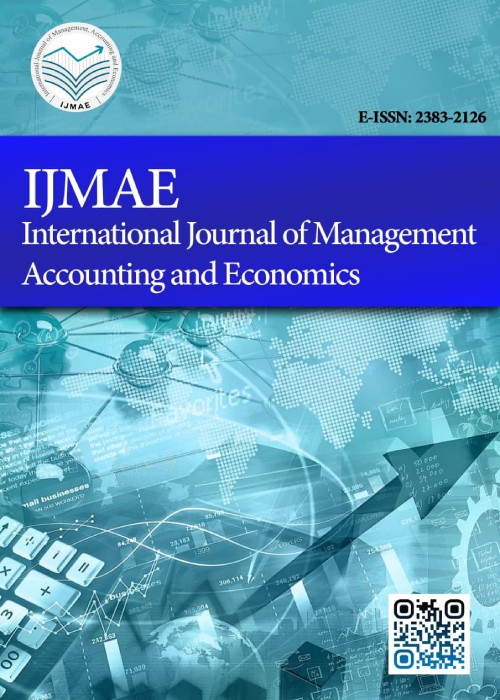فهرست مطالب
International Journal of Management, Accounting and Economics
Volume:7 Issue: 7, Jul 2020
- تاریخ انتشار: 1399/06/01
- تعداد عناوین: 4
-
Pages 305-325
How can employees be driven to engage in desirable behaviors such as greater participation in achieving goals, collaboration, and knowledge sharing? How can new customers be encouraged to buy the company's products and services? How are brand loyalty, health-oriented behaviors, adherence to rules, and social participation strengthened? Gamification is an interdisciplinary approach that provides answers to all of these questions. Gamification is about designing with the help of game components to create a game-world experience for users in real-world situations. Many managers of for-profit corporations and the public sector now use gamification strategies to influence the behavior of their beneficiaries and gamifying commercial, industrial, and social environments. The present study, with its systematic review of theoretical literature and meta-analysis of related research, intends to acquaint researchers in the fields of management and economics with the capacities of gamification in improving the business. This begins with a description of the basics (such as theories, dynamics, and mechanics) and continues with a summary of gamification applications in Management Aspects and Business/ Institutional Areas. Management Aspects section includes Marketing, Brand Loyalty, Advertising, Education, Organizational Behavior, and Operations Management; and in Business/ Institutional Areas section the applications of gamification in the Healthcare, Tourism, Political Participation, and Military are mentioned
Keywords: Gamification, Serious Games, Gamified World, Game Experience, Game of Work -
Pages 326-334
This paper considers a mixed duopolymarket in which a private firmcompetes against a public firm. Each firm first has to choose the timing for offering a wage-rise contract as a strategic device. The timing of the game is as follows.In stage one, each firm chooses either stage two or stage threesimultaneously and independently. In stage two, the firm choosing stage two offers a wage-rise contractin this stage. In stage three, the firm choosing stage three offers a wage-rise contractin this stage. At the end of the game,each firm chooses its actual output simultaneously and independently. The paper studies the behavior of the public firm and the private firm in the mixed duopoly model. The aim of this paper is to present the equilibrium outcome of the mixed duopoly model.
Keywords: Endogenous timing, private firm, public firm, wage-rise contract -
Pages 335-350
Our study based on determining factors that affect the function of demand for money in the Malaysian economy over 1970-2018 based on time-series data col-lected from WDI (World Bank). We tacitly include real CPI, real interest rate, financial innovation, real GDP, and implied the ARDL Bound tests. Derived from empirical evidence, we revealed that financial innovation has quite a sig-nificant and positive impact on the short-term. In contrast, real GDP has a nega-tive and meaningful relationship with real money demand function in Malaysia. The official real exchange rate has a positive and significant relationship with real-money demand, with an increase in the real exchange rate of one unit, boost-ing the long-term function with money demand by 0.97.Negative and significant relationships revealed that by raising 1% real GDP dissecting to decrease real money demand by 0.6395 in the Malaysian economy. Eventually, real money demand anticipated 13.0796 once all independent variable in the Malaysian economy is zero.
Keywords: Real Money Demand, Financial Innovation, RGDP -
Pages 351-369
Employers always seek to engage employees who are fit for the work, able to adapt to the changing trends in the business environment and contribute much to the organizations to the best of their abilities. It is however not automatic for an organization to achieve such objective. They must constitute programs and measures that would help them realize this goal and take employees to the level that would enable them to give their best to the organization. Using an online survey, a questionnaire was sent randomly to 460 employees within SMEs in Accra Metropolis out of which 400 responded to the questionnaire sent to them. The researcher explored the mediating role of Work Engagement on the relationship between Organizational Career Management and Career Satisfaction. OCM was categorized into three indicators, which are Career Planning, Career Development and Career Opportunity for the purposes of this study. The study revealed that Organizational Career Management (Career Planning, Career Development, and Career Opportunity) have an impact on employees Career Satisfaction and Work Engagement. It further showed that Work Engagement mediates the relationships between the independent variables and the dependent variable among employees in SMEs in Accra Metropolis. In view of this, the studyrecommends that, in order to promote career satisfaction and sustain work engagement among employees, SMEs should promote and incorporate Career Planning, Career Development, and Career Opportunity into their mainstream activities.
Keywords: Career Development, Career Opportunity, Career Planning, Career Satisfaction, Organizational Career Management, Work Engagement


